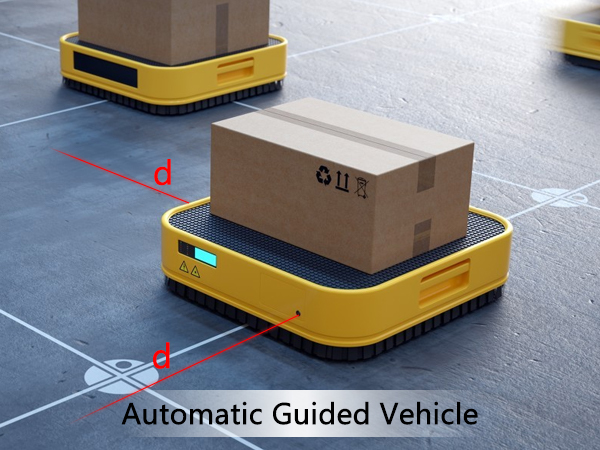How To Used Laser Rangefinder Module In Automated Guided Vehicles
Using a laser rangefinder module in an Automated Guided Vehicle (AGV) involves several key steps to ensure accurate distance measurement, safe navigation, and efficient operation. Here’s a detailed guide on how to integrate and use a laser rangefinder module in an AGV:
1. Select the Right Laser Rangefinder Module
- Type: Choose between time-of-flight (ToF) or phase ,laser rangefinder sensors based on your application requirements.
- Range: Select a long distance laser rangefinder model that fits the operational range of your AGV.
- Accuracy: Ensure the industrial laser rangefinder module meets the accuracy standards required for your application.
- Mounting Considerations: Consider the size, weight, and mounting options of the laser rangefinder module.
2. Hardware Integration
- Connectivity: Connect the laser rangefinder sensor to the AGV’s control system. Common interfaces include RS-232, RS-485, UART, or USB.
- Power Supply: Ensure the power supply is compatible with the industrial laser rangefinder’s voltage and current requirements.
- Mechanical Mounting: Securely mount the laser rangefinder module on the AGV, typically at the front or sides, depending on the desired field of view.
3. Software Integration
- Communication Protocol: Implement the communication protocol used by the laser rangefinder module. This may involve writing custom drivers or using existing libraries.
- Data Processing: Develop software to process the distance data received from the long distance laser rangefinder. This might include filtering, noise reduction, and calibration routines.
- Navigation Algorithms: Integrate the distance data into the AGV’s navigation algorithms. This can include SLAM (Simultaneous Localization and Mapping) algorithms, obstacle avoidance systems, and path planning.
4. Calibration
- Initial Calibration: Calibrate the industrial laser rangefinder to ensure accurate distance measurements. This often involves measuring known distances and adjusting the rangefinder sensor’s settings.
- Field Calibration: Perform field calibration in the actual operating environment to account for environmental factors like temperature and humidity.
5. Testing and Validation
- Static Testing: Test the laser rangefinder module in a static setup to verify its performance under controlled conditions.
- Dynamic Testing: Conduct dynamic tests by running the AGV in a controlled environment with predefined obstacles and paths.
- Safety Checks: Ensure the AGV can safely stop or reroute when an obstacle is detected within a certain distance threshold.
6. Operational Considerations
- Environmental Factors: Consider the impact of dust, water, and other environmental factors on the AGV laser rangefinder’s performance.
- Maintenance: Regularly clean and inspect the laser rangefinder sensor to maintain optimal performance.
- Upgrade Path: Plan for future upgrades or replacements as technology advances.
7. Documentation and Training
- Documentation: Document all aspects of the integration process, including hardware connections, software configurations, and troubleshooting procedures.
- Training: Train operators and maintenance personnel on the proper use and maintenance of the AGV with the integrated laser rangefinder module.
By following these steps, you can effectively integrate and utilize a laser rangefinder module in your Automated Guided Vehicle to enhance its navigation capabilities and overall performance.
Email: sales@seakeda.com
WeChat / WhatsApp: 86-18302879423
Post time: Feb-17-2025






